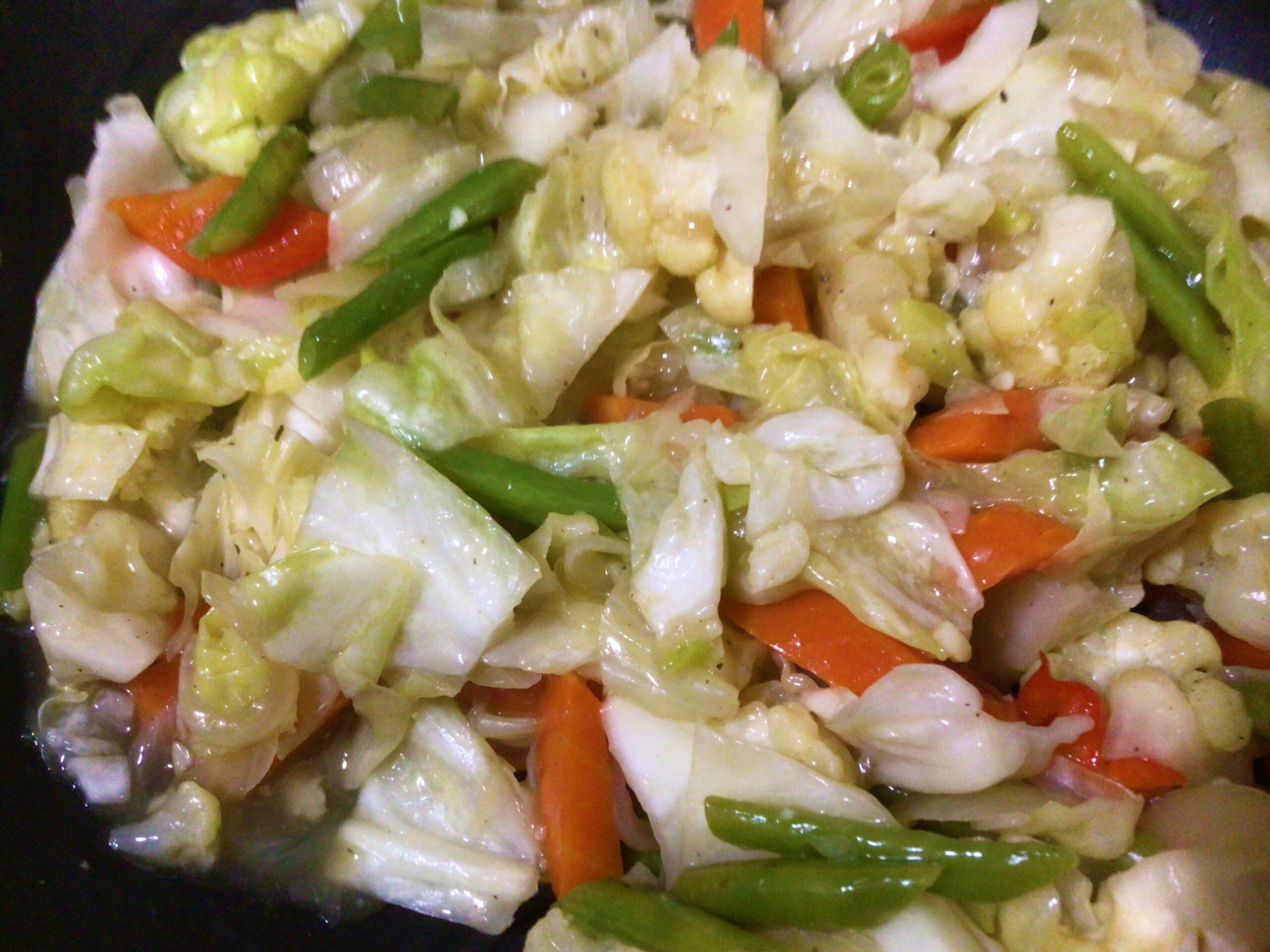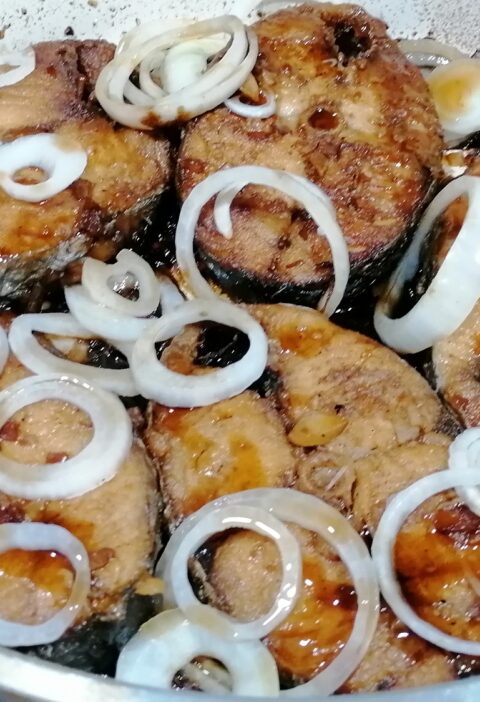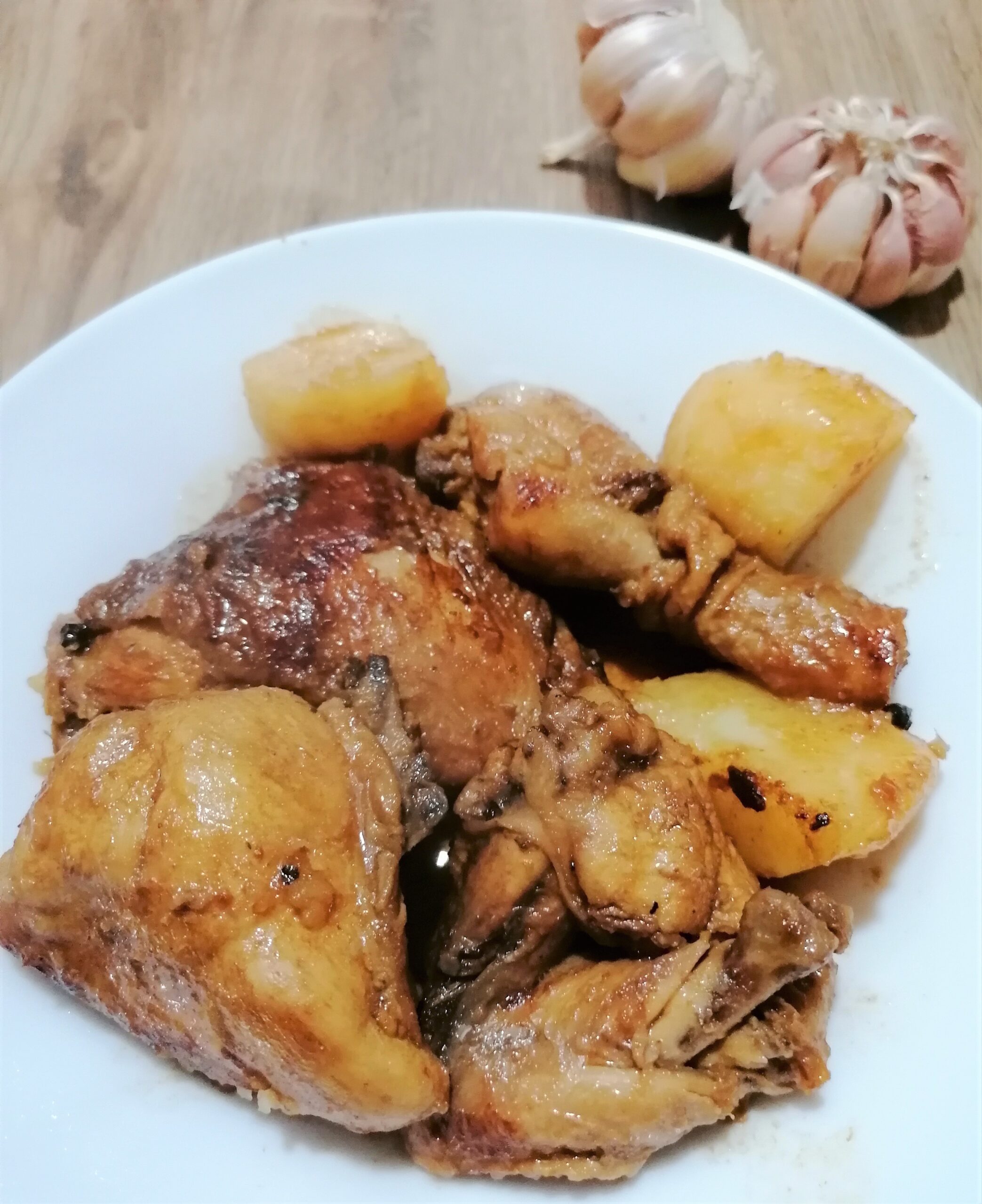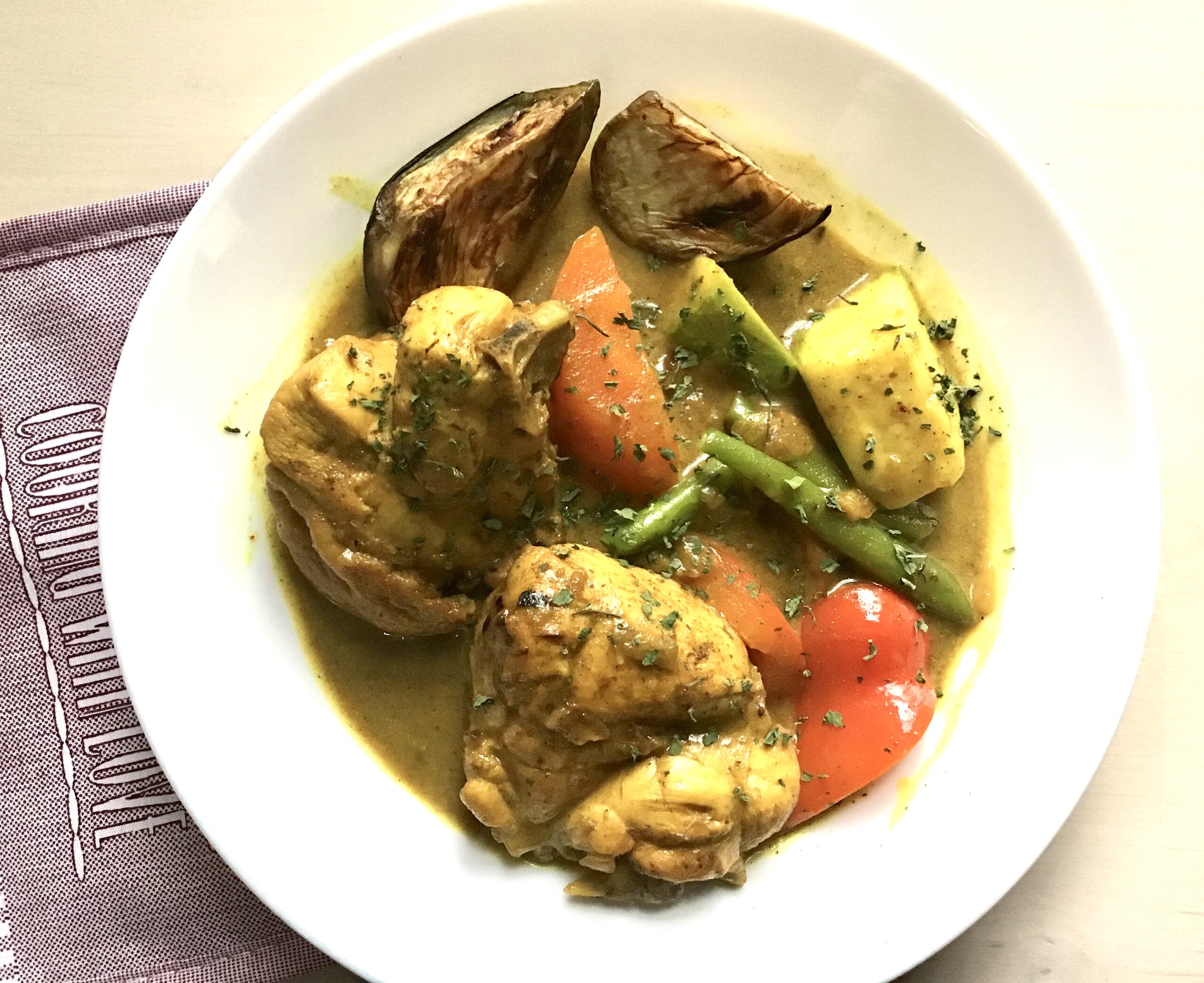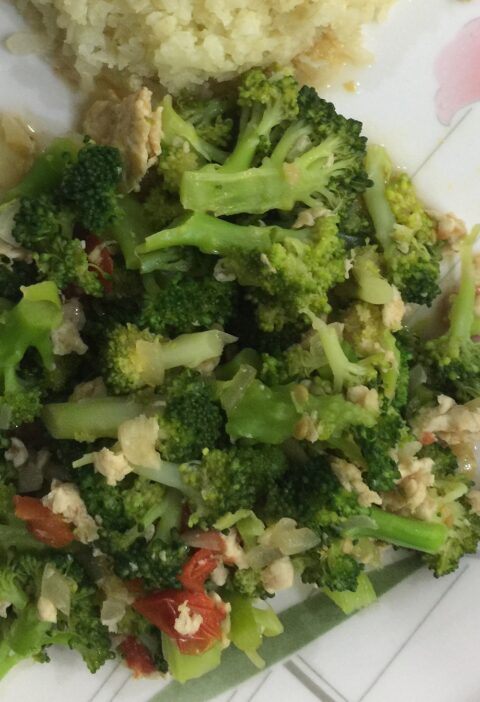This post for chicken arroz caldo offers two ways of cooking. The traditional way and what I call the practical way. They use the same ingredients and result in the same comforting taste of chicken soup.
What is chicken arroz caldo?
Chicken arroz caldo is a soup made of glutinous rice (malagkit as it is called in the Philippines) and chicken pieces sauteed in ginger, garlic, and onions. It is the Filipino version of congee and is culturally served as a snack item. Although best served during the cooler winter months or rainy season, it is not unusual that chicken arroz caldo is cooked during hot summer days, a comfort food indeed. It is widely available any time of the year in restaurants, eateries, and even hotels. Chicken arroz caldo is also called “chicken lugaw.”
Origin of chicken arroz caldo
The recipe for chicken arroz caldo, we can say, was of Spanish origin. “Arroz” means rice and “caldo” means broth – both are Spanish terms and, therefore, an easy giveaway in believing that it is the origin of the dish. However, it was introduced by Chinese immigrants from their “congee” during their presence in the Philippines around the same time the Spanish colonized the country.
A little bit of trivia: the Chinese were traders in the Philippines about two centuries before the Spanish colonization. Hmmm, then it becomes an easier deduction that arroz caldo came way later, probably around the 18th century; the term was simply associated with the earlier occupants – the Spanish that is. Additionally, according to some readings, it was introduced as a side street business by the Chinese sometime after the Spaniards were in the Philippines. Of late, the Chinese congee and the Filipino arroz caldo are in many ways similar.
Health and common benefits of chicken arroz caldo
A comfort food, it has its medicinal properties mostly from ginger and its soupy substance. It helps rid of headaches, soothe colds, and sometimes, lower body temperature from fever.
- It heals headaches, soothes common colds, etc. From my own experience, the toughest of headaches (cluster headaches, migraines – which are my best friends) are tenderly shown out of the door by a good serving of steaming hot arroz caldo. I add more ginger to the recipe and it becomes the real punch that rids the headache, especially if coupled with a little rest. My husband asks for “chicken lugaw” whenever he has a cold or flu. And that is all he needs. This goes to show, at least as far as I am concerned, that the healing effect of chicken arroz caldo is not among Filipinos only (aka, all in the mind or a matter of having been accustomed to). Hmm, for those who do not know yet, my husband is a Saudi.
- Chicken arroz caldo provides heat and energy, especially during winter months. Arroz caldo is a common joke in the household when I serve this during the non-winter time. It is like a question mark to have to serve it during hot (summer) days when we know how much heat it would provide. Well, arroz caldo can be served warm; some prefer it almost cold. A good excuse from someone who would eat arroz caldo anytime.
- Versatile – good for breakfast, a snack, or as a dinner item. Indeed! What else can I say?
- Easy-reach and a cheaper alternative to regular rice and viand. Single cooking of arroz caldo yields more than double in quantity. There is a phrase in the Philippines that says “tubong-lugaw,” which suggests that the earnings from the sales are similar to that of selling arroz-caldo. The recipe below which calls for 3 cups of rice will result in a big pot that is good for at least 10 generous servings. It is also common knowledge that to extend the quantity of cooked arroz caldo, adding water to the pot is the thing to do. Stirring the arroz caldo after the addition of water does not tamper the taste of the dish except for a call for additional fish sauce to make up for the salt. This, however, is completely optional.
Chicken arroz caldo ingredients
- Rice. Arroz caldo is rice soup where the rice is cooked to its softest version, close to looking like oatmeal. This is easily achieved using glutinous rice. You can opt to use a combination of glutinous rice and regular rice if you prefer the soup to be less thick. If you were to omit glutinous rice, I suggest you use Jasmine or Calrose or medium-grain rice and a little less amount of water by ratio, to achieve thickness.
- Chicken. There is a tricky part in choosing chicken parts as an ingredient for arroz caldo. Although it would be easier to eat the boneless part (breast), the taste of the dish is improved a lot by the inclusion of bones while cooking! Of course, the bones can be quite a nuisance when you are having soup. The solution to this little dilemma is to cook the chicken and the rice separately. There is further info below under “how to cook arroz caldo” and “cooking tips.”
- Fresh Ginger. A piece of ginger will do, to be honest about it. However, loads of ginger is my preference. You will never go wrong with the use of ginger in this recipe. From small quantity to huge, the taste of arroz caldo will, of course, vary, but you will still achieve that lugaw taste.
- Garlic. This is seeking center stage in the recipe! Garlic is used at the beginning of cooking, and again when serving. Although optional, topping this dish with golden brown fried garlic is a nice touch and a satisfying tease to the salivary glands.
- Onions. This provides an essential taste to the chicken which gives off the taste to the rice, creating that wondrous soup that is heavenly.
How to cook chicken arroz caldo
There are at least two ways to cook arroz caldo.
First is the traditional way. Sautee the chicken pieces with ginger, garlic, and onions. Then mix the rice and water letting them cook until the desired consistency. In between, add salt, black pepper, and tablespoons of fish sauce (patis).
Second is to sautee as usual while cooking the rice in a separate pot. Then mix them in the sauteeing pot along with water followed by the usual spices or condiments.
These two methods of cooking achieve the same result.
Serving suggestion
This is the fun part. Serving arroz caldo should be as simple as scooping it using a ladle and serving it in separate bowls. However, a few additional garnishing can substantially make the dish taste ten times better.
- Green onion. Young onion, as it is also called, in thin slices adds some fresh onion taste to the already-infused with onion taste of arroz caldo! And it is a winner!
- Golden brown garlic slices. These can be fried or baked ahead of time. They are also now available in local supermarkets.
- Hard-boiled eggs. Whole or slices of hard-boiled eggs sometimes tame the taste of arroz caldo or provides a little transition between the egg’s plain taste and the arroz caldo’s soup.
- An extra sprinkling of freshly ground black pepper. This is optional.
- Dash of lemon or calamansi. Final touch! The best of them all.
How to keep left-over arroz caldo
Keep left-over arroz caldo in a tight-lid container in the fridge for a couple of days, or in the freezer for a month. Then reheat in a pot over medium heat. It has a tendency to be thicker and the best solution to it is to add enough water to the pot. You will be surprised at how the water and the arroz caldo mix smoothly to give you the same consistency you always love your arroz caldo to be.
Cooking tips
- Soaking uncooked rice for about 20 minutes will help in hastening the cooking process and in yielding more servings, believe it or not.
- White or yellow onions are the best choice for onions as the red counterpart makes the dish darker (dirtier?).
- Sautee ginger first, stirring regularly until a bit golden before adding garlic. Stir for another minute, then add onions. Stir again until the onions wilt, then add the chicken.
- If you were to cook the chicken separately from the rice, make sure the chicken is at least half done before adding the rice (cooked or uncooked).
- The chicken pieces have given off their taste when they are no longer pink. Another indication that the chicken is cooked is when they start to float on the broth
- Boneless chicken breast is a good choice, but may not give off the best taste to the dish. A good tip would be to cook the boneless breast pieces along with the bone-in parts then serve arroz caldo later without the chicken bones. Another choice is to cook the chicken separately and debone it before mixing meat with arroz caldo.
- Adding chicken liver is a matter of preference. You’ll find out as you go and as you have cooked arroz caldo more than once.
- Season with salt sparingly especially if you are using fish sauce generously and if you are adding bullion or chicken cube. It is very easy to end up with a salty arroz caldo which might be difficult to reverse even with a good helping of lemon juice.
- Cooking arroz caldo requires a lot of stirring. This prevents the content from sticking at the bottom or around the side of the pot.
- Using a slotted spoon, for some reason, is best. I can’t explain why 🙂
- You can cook chicken tinola the same way by simply replacing the glutinous rice with vegetables, such as chayote, green papaya, bottle gourd, or pumpkin.

Recipe for Chicken Arroz-Caldo
- Prep Time: 15 minutes
- Cook Time: 30 minutes
- Total Time: 45 minutes
- Yield: 8 servings 1x
- Category: Soup
- Method: cooking
- Cuisine: Filipino
Description
Chicken and glutinous rice flour soup (malagkit as it is called in the Philippines). A comfort food that is made tasty by the abundance of ginger as its base.
Ingredients
- 1 kg chicken (cut into serving pieces)
- 1–1/2 cup malagkit rice
- 1 bulb garlic (minced)
- 2 medium-size onion (diced finely)
- 4 tbsps ginger (peeled and grated)
- 4–6 cups water
- 2 hard-boiled eggs (sliced)
- salt and pepper to taste
- 4 tbsp fish sauce
Instructions
- Over medium-high heat, sautee ginger in cooking oil and stir until golden brown. Add the minced garlic and cook while stirring for another couple of minutes. Add onions and cook for an additional 4-5 minutes – just about when these three ingredients are cooked and mixed through.
- Add chicken and stir again until the pink juices come out.
- Add rice, and stir. Add water, let boil, and simmer until the rice is cooked through, adding more water, as necessary.
- Add salt, pepper, and fish sauce.
- Serve with hard-boiled eggs, sliced young onions, and fried garlic bits.
Notes
Above is the traditional way of cooking arroz-caldo.
The other option is to cook the glutinous rice separately until they are super soft while the chicken is being cooked with water, then add the rice and stir.
Frequently-asked Questions
Why do we use water in the recipe for chicken arroz caldo?
This is because we are creating chicken broth from this recipe, and the best way to get that broth is to include chicken bones in cooking. So, if you prefer arroz caldo without the bones, cooking the chicken and the rice separately would be the way to go. Practically similar to making homemade chicken stock.
Some would cook the chicken until the meat separates from the bones, discard the bones, and use the meat with the dish as is.
What is the best cooking temperature for cooking arroz caldo?
Use high heat when sauteeing, then adjust to medium heat after the chicken and water reaches boiling point. Continue to use medium heat until the rice is fully mixed and has created a thick soup and up to the end of cooking.
What makes arroz caldo yellow?
The yellow color of arroz caldo is from kasugba (safflower plant) which does not affect the taste of arroz caldo. Some others, I heard, use turmeric which I have not tried, for the reason that I felt turmeric has its distinct taste, unlike kasugba. Also, I am not accustomed to turmeric being in arroz caldo, that is all. Another coloring agent for arroz caldo is a pinch of saffron. I have tried them all, and I honestly do not use any coloring agent. I let my arroz caldo cook as it is and enjoy it.


